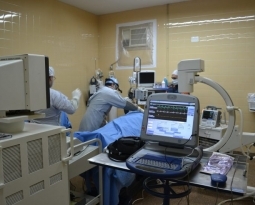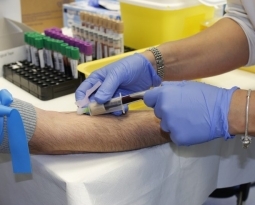South Dakota Patent of the Month – February 2024
Microfiber and nanofiber membranes, known as felts, have emerged as powerful tools for various applications, particularly in biological and industrial settings. One notable innovator, Nanopareil, LLC, has recently been granted a patent for their significant strides in electrospun hybrid nanofiber felts – a breakthrough in separation technology.
At the heart of Nanopareil’s invention lies a unique composition. The nanofiber felt consists of both composite nanofibers and single component nanofibers, each contributing distinct properties to the overall structure. The composite nanofiber blends derivatized cellulose with a non-cellulose-based polymer, while the single component nanofiber comprises a different non-cellulose-based polymer. What sets this invention apart is the differentially removable nature of these polymers, providing a novel approach to customization.
Derivatized cellulose, a backbone polymer, forms the composite nanofiber, offering enhanced stability and functionality. The derivatization involves converting cellulose into various derivatives, such as cellulose acetate or cellulose sulfate, ensuring solubility in common solvents. This step allows for efficient electrospinning, a process crucial for creating nanofibers.
The non-cellulose-based polymers in both composite and single component nanofibers introduce versatility to the nanofiber felt. These polymers, ranging from thermoplastics to elastomers, contribute diverse properties like mechanical strength, chemical resistance, and tailored surface functionalities. The ability to differentially remove these polymers adds an extra layer of customization, allowing for precise adjustments in the felt’s characteristics.
Nanopareil’s invention finds applications in biomolecule purification and chemical separations. The nanofiber felt, with its high permeance and capacity, offers an efficient means of separating molecules from fluids. The process involves flowing a fluid through the nanofiber felt, where molecules are separated based on size or through adsorption mechanisms. This method proves particularly valuable in the biopharmaceutical industry, where the demand for efficient and reusable separation media is high.
The electrospun hybrid nanofiber felt addresses limitations in conventional separation methodologies. Its three-dimensional porous structure, coupled with the differential removal of polymers, leads to enhanced stability and efficiency. This breakthrough holds promise for various industries, from biopharmaceuticals to environmental monitoring, showcasing Nanopareil’s commitment to advancing separation technologies. As this innovation continues to unfold, it opens new possibilities for tailored and efficient solutions in diverse fields.
Are you developing new technology for an existing application? Did you know your development work could be eligible for the R&D Tax Credit and you can receive up to 14% back on your expenses? Even if your development isn’t successful your work may still qualify for R&D credits (i.e. you don’t need to have a patent to qualify). To find out more, please contact a Swanson Reed R&D Specialist today or check out our free online eligibility test.
Who We Are:
Swanson Reed is one of the U.S.’ largest Specialist R&D tax advisory firms. We manage all facets of the R&D tax credit program, from claim preparation and audit compliance to claim disputes.
Swanson Reed regularly hosts free webinars and provides free IRS CE and CPE credits for CPAs. For more information please visit us at www.swansonreed.com/webinars or contact your usual Swanson Reed representative.

















